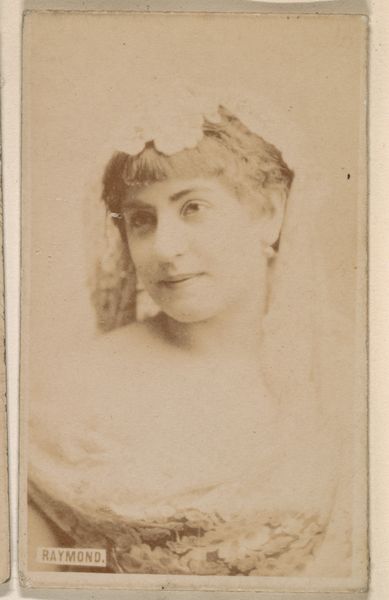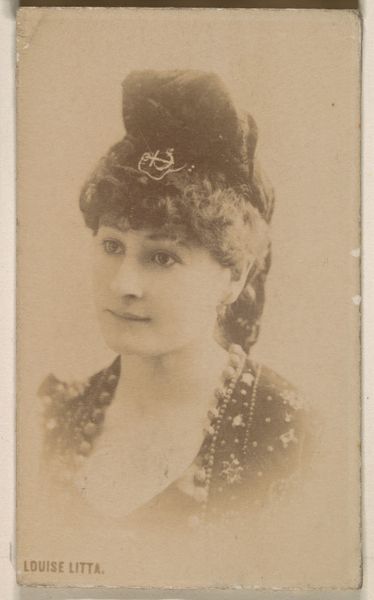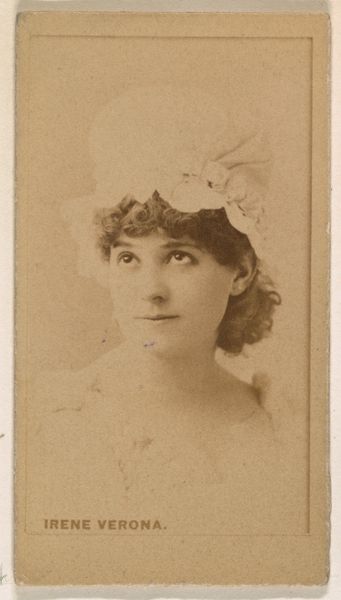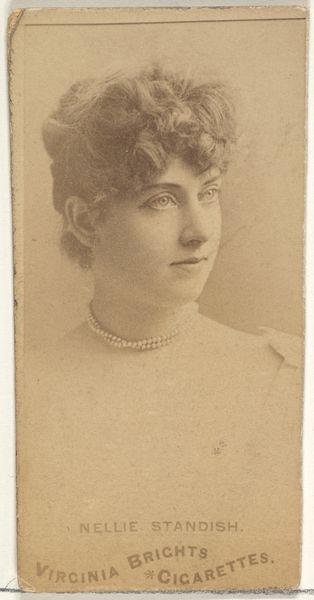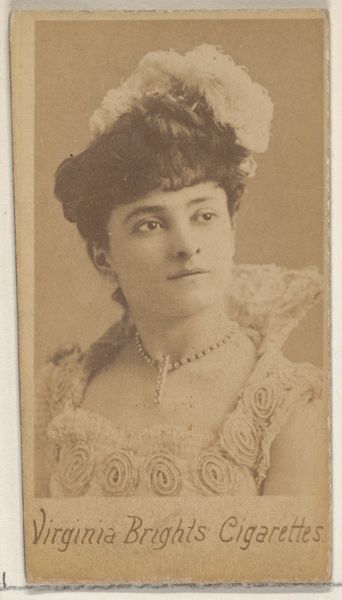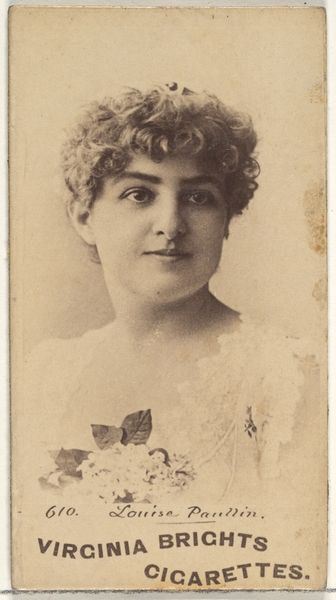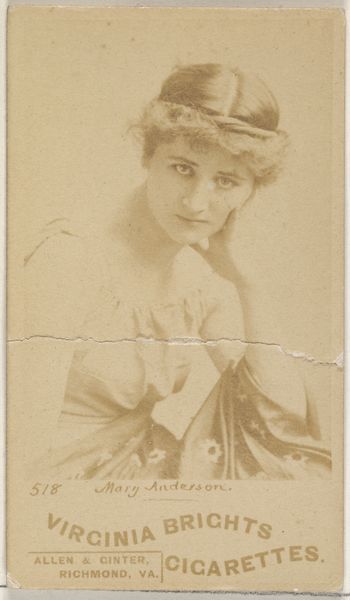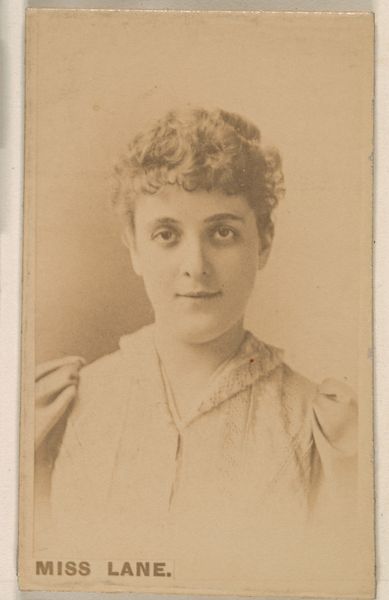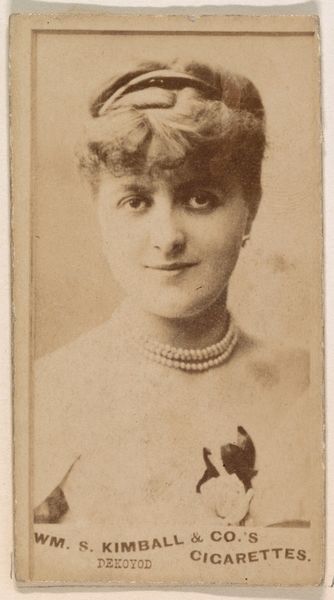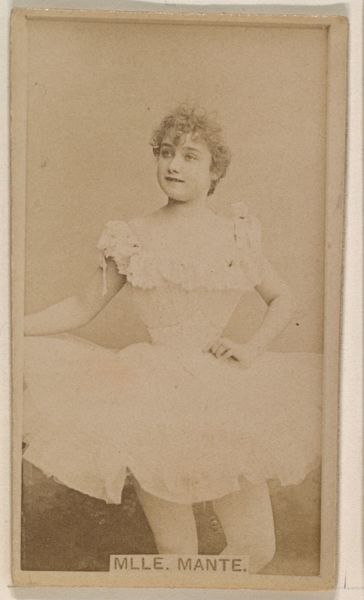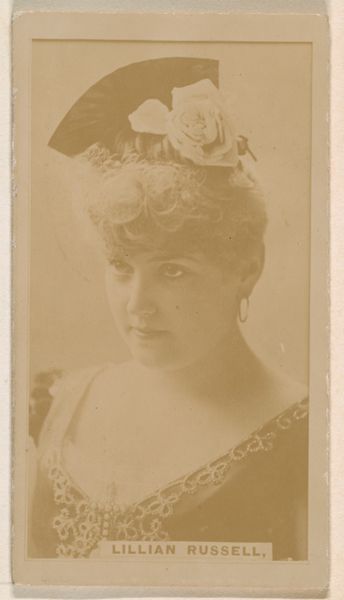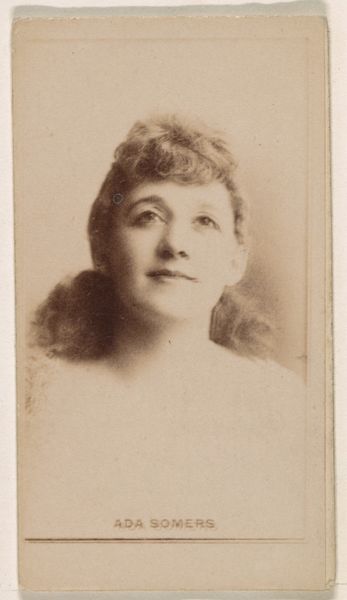
Laura Burt, from the Actresses series (N246), Type 1, issued by Kinney Brothers to promote Sporting Extra Cigarettes 1888 - 1892
0:00
0:00
drawing, print, photography
#
portrait
#
drawing
# print
#
photography
#
photojournalism
Dimensions: Sheet: 2 3/4 × 1 5/8 in. (7 × 4.2 cm)
Copyright: Public Domain
Editor: This is a photograph, or possibly a print, of Laura Burt, a stage actress. It was made sometime between 1888 and 1892 by Kinney Brothers Tobacco Company as part of their "Actresses" series to promote Sporting Extra Cigarettes. The sepia tone gives it an antique feel. What can you tell me about the way it was produced and why? Curator: This seemingly simple portrait is a window into the burgeoning consumer culture of the late 19th century. The material reality is that this is mass-produced celebrity portraiture designed to drive sales of tobacco. The chromolithographic print, likely derived from a photograph, collapses high and low art. How does the choice of subject – a popular actress – further blur these boundaries? Editor: Well, making her face so accessible through something as commonplace as a cigarette card means she's no longer just on the stage. Her image becomes a commodity. Curator: Precisely. Think about the labor involved. From the tobacco farmers to the factory workers producing cigarettes and printing these cards, each person contributed to the circulation of this image. How does that change your understanding of “art” versus “product?" Editor: I see what you mean. It highlights the human effort and industrial processes that go into making even something seemingly simple, like a promotional card. It shifts the focus from the individual artwork to a web of production and consumption. Curator: And consider the consumer. This card, tucked inside a cigarette pack, was handled, traded, and collected. Its value was not just aesthetic, but social and economic. The materiality of this "art" is intrinsically linked to its use and distribution. Editor: So, analyzing the materials and how it was made really tells a deeper story about society at that time. Curator: Absolutely. It exposes the hidden layers of labor, consumption, and the complex interplay between art and commerce in the late 19th century.
Comments
No comments
Be the first to comment and join the conversation on the ultimate creative platform.
